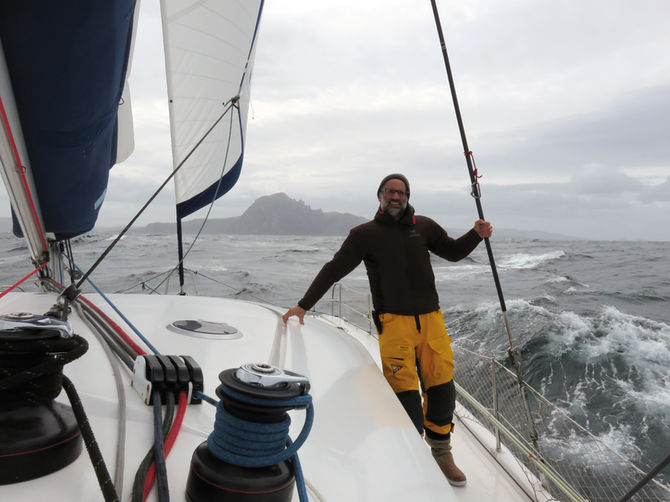
Issue #: 154
Published: July / August 2017
- Price per issue - digital : 5.70€Digital magazine
- Price per issue - print : 7.70€Print magazine
- Access to Multihulls World digital archives Digital archives
This Multihull’s Match brings together the points of view of two experienced sailors who have pushed back the generally accepted limits for this type of boat (Libellule and Babouche). They offer something for everyone to reflect on: builders, designers. We have retained the direct and condensed tone of the exchanges, which took place on returning from Kamchatka, for Philippe Cottier, and before setting off or an Icelandic expedition, for Sébastien Roubinet.
A cruising catamaran in the pack ice – an illusion?
By Philipp Cottier, catamaran Libellule (NW passage and Antarctic expedition)

In 2013, we set off with our three daughters and our catamaran Libellule (a Salina 48 from Fountaine Pajot) for Greenland, to cross the famous North-West Passage. Before undertaking this adventure, there were many skeptics who maintained that heading for the ice in a catamaran was nothing short of madness. They were without a doubt right, because a cruising cat is intended for the Caribbean, not for polar navigation! Not only because it is in polyester, but also because its beam and the two hulls make progress in the ice more complex. The biggest risk comes from the pack ice, always unpredictable, but also from the growlers and bergy bits coming from the icebergs. We chose a catamaran quite simply because we had no other boat available! With the help of my Swiss obstinacy, I nevertheless wanted to do this trip, which I had been dreaming about since childhood! The voyage was meticulously planned. Two very experienced French skipper friends, Yves German and Sylvain Martineau, came with us. We had had numerous discussions with several engineers in La Rochelle, notably to explore the four following scenarios: Impact crash (hitting a growler in a strong wind situation, which we hadn’t seen because of the waves’ foam): we therefore reinforced the crash boxes with seven layers of Kevlar. Cutting of the bows by sharp pack ice: the skins of the hulls are not very thick and not designed for this use; we therefore applied two layers of Kevlar along the bows. Vertical compression (being compressed by the pack ice from the front towards the back): the boat should rise on top of the ice, thanks to the shape of the bows, but we nevertheless reinforced the rudder tubes. Lateral compression (being compressed by the pack ice was the most complicated scenario, as we were not at all sure whether the cat would rise on top of the ice, or whether it would be crushed): we reinforced the hulls with additional floors. Above all, we invested in satellite communication, to be able to download ice and weather charts permanently, which proved to be really very useful. Our investment in a heater was in vain, as in these temperatures, single glazed areas pose an insulation problem. Another active defense tool: two windsurfer masts, to push the ice by hand in the tight passages. We had already tested the whole boat in 2011 in South Greenland, and confronted the dangers of the pack ice for the first time. This first experience had completely fascinated us all (adults and children), and gave us the confidence to tackle the challenge of the North-West Passage in a catamaran. The voyage was finally a great success, despite the presence of a lot of ice in the passage in 2013. Delighted by this Arctic challenge, we set off again aboard Libellule two years later, to head for the Antarctic Peninsula, with a few mountain ascents as our ...
What readers think
Post a comment
No comments to show.